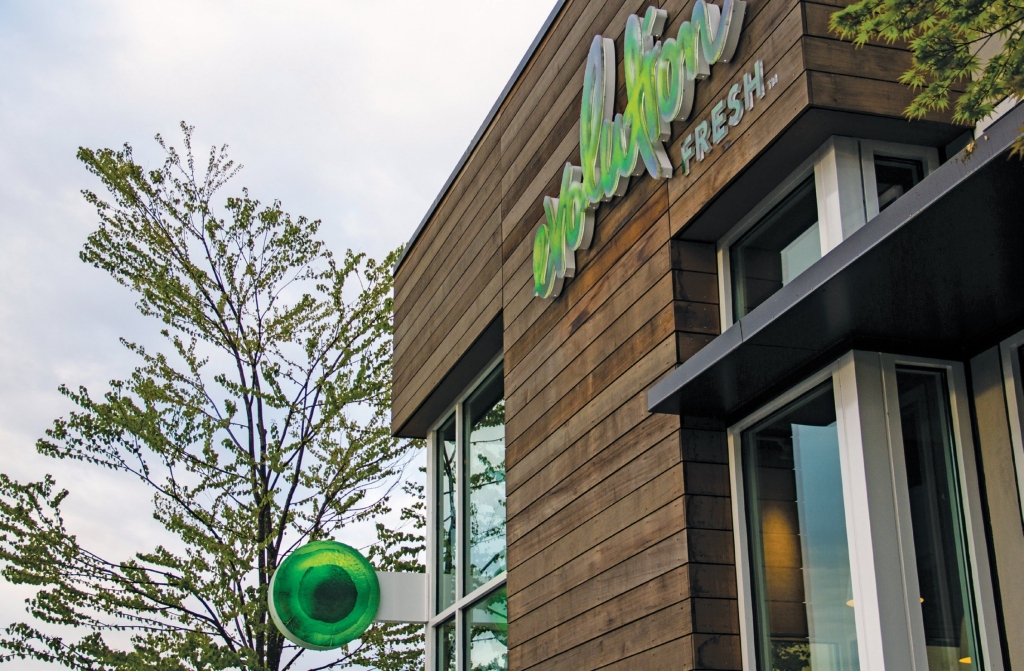Forty years ago, the Society for Environmental Graphic Design (SEGD) was a fledgling organization that attempted to impress upon architects, general contractors, property owners and managers, and other interested parties, the importance of signage and environmental graphics – not as utilitarian identifiers of facility amenities, but rather as essential branding and placemaking tools.
Now the Society for Experiential Graphic Design, it’s grown into a broad-based organization that represents designers, fabricators, vendors, academics and end users, all of whom share the common interests of staying informed about evolving technologies, materials, issues in dealing with governmental entities and general contractors, and numerous topics that impact built-environment graphic treatments.
Several SEGD-member designers and fabricators from diverse backgrounds have graciously answered questions about trends in the environmental-graphics market. In an industry whose diversity grows daily, one voice can’t speak as an all-encompassing industry authority, but these experts embody the industry’s breadth.
Kay Christensen, Designer, Tuber Art Group
Tell me about your personal and shop background, and what changes you’ve seen in the industry.
Tube Art Group was founded in 1946; our corporate headquarters are in Bellevue, WA, and we have other facilities in Yakima and Auburn, WA, as well as Portland, OR. Our service trucks run out of Tukwila, WA. I’ve worked in the sign industry for 33 years; I began my employment in the business with my first job out of art school. Over the last decade, LED and inkjet-printing improvements have been the most significant changes I’ve seen. Now, internally illuminated signs can have thinner profiles, more unique shapes, and brighter, more even illumination. And, with digital printing, the broader repertoire of direct-printing equipment and media has greatly enhanced possibilities. Color matching is no longer limited; it’s only a question of resolution. However, possessing in-house expertise is critical.
How much of your work is full design/build, and how much comprises EGD-firm partnerships?
I’d say it’s about 50/50 these days. More clients are contracting us to design/build and take advantage of value-engineering that follows controlling specifications and staying on budget throughout the process. When we do partner with EGD firms, the trend is to partner early in order to maintain control and manage it through to completion. It’s a more efficient collaboration, which also saves the client money, when we’re able to work with 90%-complete drawings early on and no surprises from bidders who misunderstood renderings that were only 50% complete at an early stage.
What trends are transforming the way you fabricate signage?
Interestingly, we’re merging a lot of new materials with old, reclaimed items. We’re currently
building a sign made out of glass bottles; what a fun challenge! We’re inching towards 3-D printers
for presentation models, and we think this technology could significantly change how we design signs in the future. SolidWorks (3-D software) has had a significant impact for us, because we’re able to visually communicate with the fabrication team and troubleshoot before a job hits the production floor, which is huge.
Tell me about a recent, unique project Tube Art executed.
Starbucks’ creative team asked us to create signage for Evolution Fresh, its flagship in Bellevue, and an affiliated, fresh-pressed juice shop in Seattle’s University Village. They wanted a one-of-a-kind sign to look “alive”, while meeting a tight budget and tighter deadline. All of our teams created samples, and re-engineered them on the fly when something wasn’t working. The sign features low-profile letters, with a direct-print, watercolor effect and complex edges to create a handcrafted effect.
We installed it overnight for an unveiling that was covered by worldwide media. Great relationships, teamwork and talented craftsmen made it happen.
Advertisement



 Tip Sheet3 days ago
Tip Sheet3 days ago
 Business Management1 week ago
Business Management1 week ago
 Women in Signs2 weeks ago
Women in Signs2 weeks ago
 Real Deal4 days ago
Real Deal4 days ago
 Editor's Note1 week ago
Editor's Note1 week ago
 Line Time2 weeks ago
Line Time2 weeks ago
 Product Buying + Technology1 week ago
Product Buying + Technology1 week ago
 Women in Signs4 days ago
Women in Signs4 days ago









